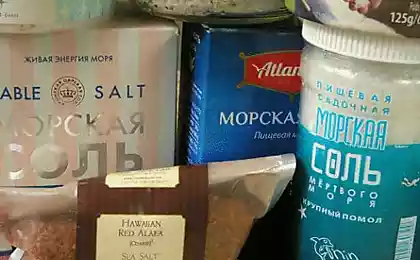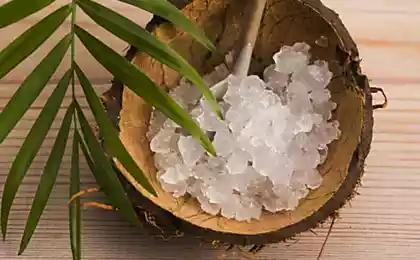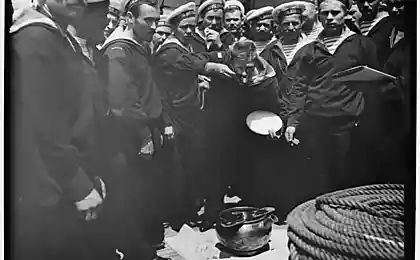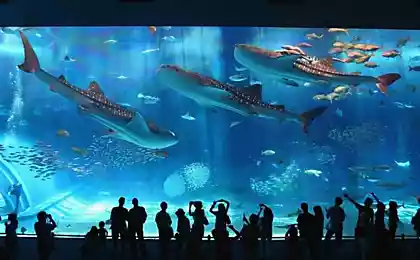767
Huge sea handsome
Unusual for its beauty spectacle is floating in the waters of the Indian Ocean is the largest of the rays - a giant sea devil, or mantle. British photographer Beverstoku Warren (Warren Baverstock) managed to capture the beautiful sea creatures in the Gulf desert island Hanifaru Maldives archipelago.

Fame manta ray (lat. Manta birostris) was due to its huge size. The width of the body of individuals up to 7 m (in the bulk of 4-4, 5 meters) and the weight of large specimens - up to 2, 5 tons.

Living ramps in all the warm seas and tropical waters of the Pacific and Atlantic oceans, including the Mediterranean Sea.

Manta ray exclusively feeds on small fish and plankton crustaceans
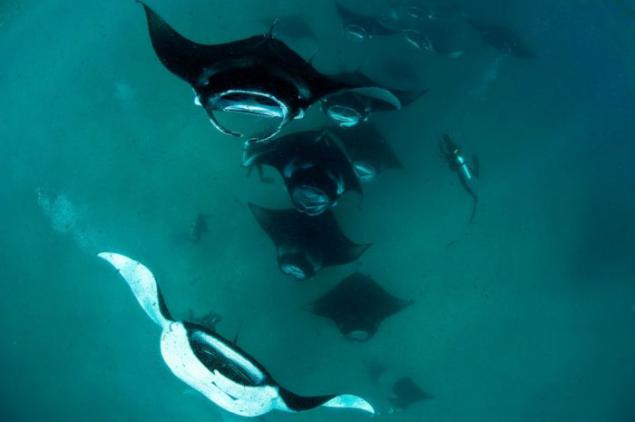
Manta ray also known as "giant sea devil." The unusual name he received for head fins along the edges of the mouth slit. Fins ramp needed for hunting. During the voyage, he sends them into the mouth water flow, rich in plankton and small fish.
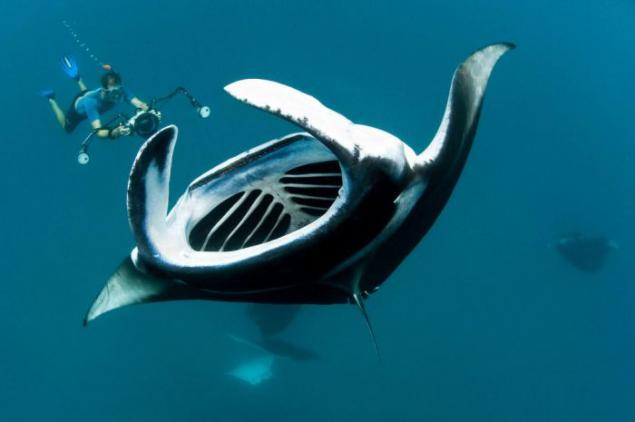
Stingrays suck in water and passed through a gill plate. After filtering, they are crustaceans, and small fish.
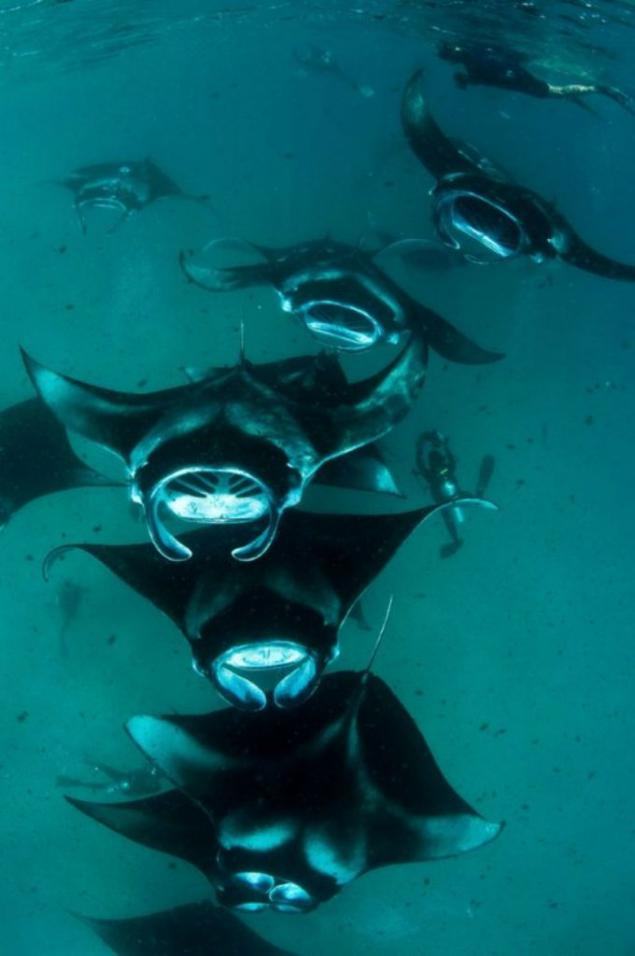
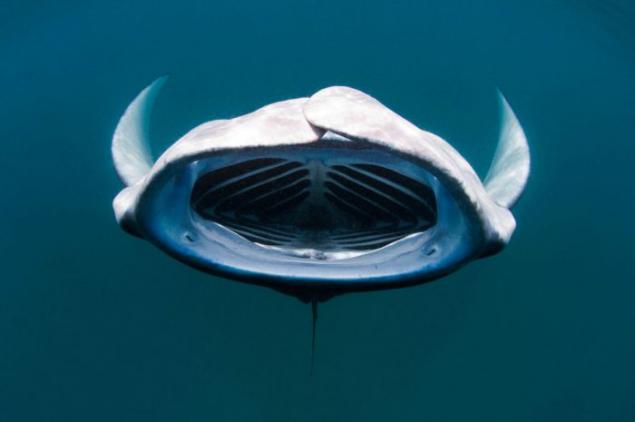
The process of reproduction of these rays little is known. The female brings a large baby width of about 125 cm and weighing 10 kg.
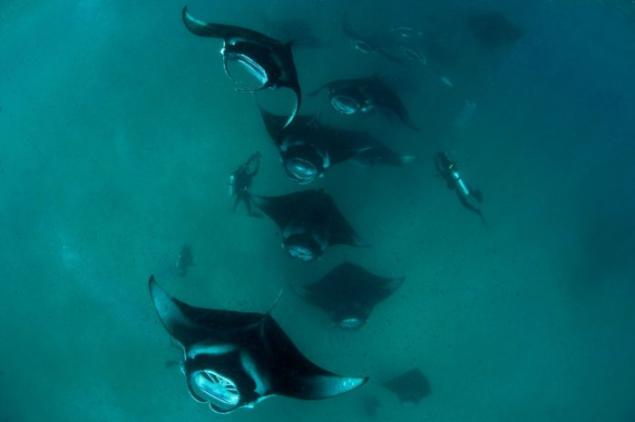
The only danger to humans comes from manta rays jumping out of the water. Manta might accidentally fall on a boat or a swimmer all his enormous weight. Manta ray often jumps out of the water. What he does, it is still not known for certain. Perhaps in this way he is trying to get rid of wearable marine parasites.
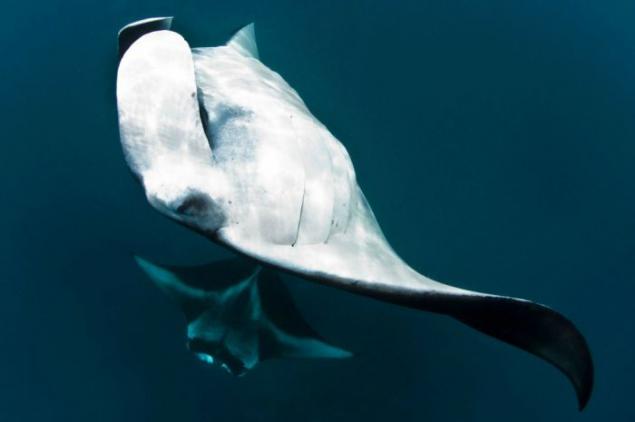
Manta overcome great distances in search of food, constantly following the movements of the plankton. The maximum speed that develops a manta ray - about 10 kilometers per hour.
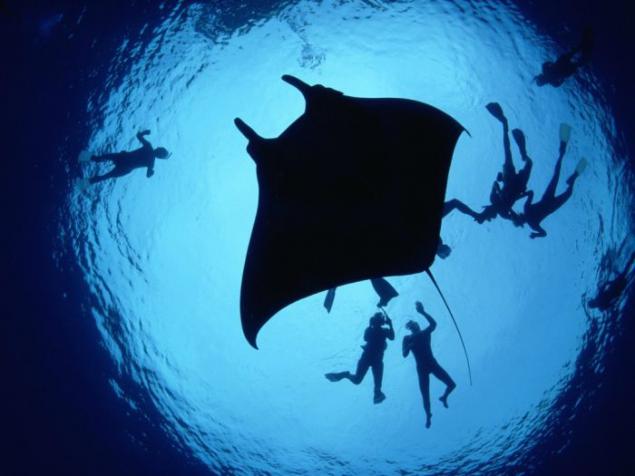

Fame manta ray (lat. Manta birostris) was due to its huge size. The width of the body of individuals up to 7 m (in the bulk of 4-4, 5 meters) and the weight of large specimens - up to 2, 5 tons.

Living ramps in all the warm seas and tropical waters of the Pacific and Atlantic oceans, including the Mediterranean Sea.

Manta ray exclusively feeds on small fish and plankton crustaceans

Manta ray also known as "giant sea devil." The unusual name he received for head fins along the edges of the mouth slit. Fins ramp needed for hunting. During the voyage, he sends them into the mouth water flow, rich in plankton and small fish.

Stingrays suck in water and passed through a gill plate. After filtering, they are crustaceans, and small fish.


The process of reproduction of these rays little is known. The female brings a large baby width of about 125 cm and weighing 10 kg.

The only danger to humans comes from manta rays jumping out of the water. Manta might accidentally fall on a boat or a swimmer all his enormous weight. Manta ray often jumps out of the water. What he does, it is still not known for certain. Perhaps in this way he is trying to get rid of wearable marine parasites.

Manta overcome great distances in search of food, constantly following the movements of the plankton. The maximum speed that develops a manta ray - about 10 kilometers per hour.

